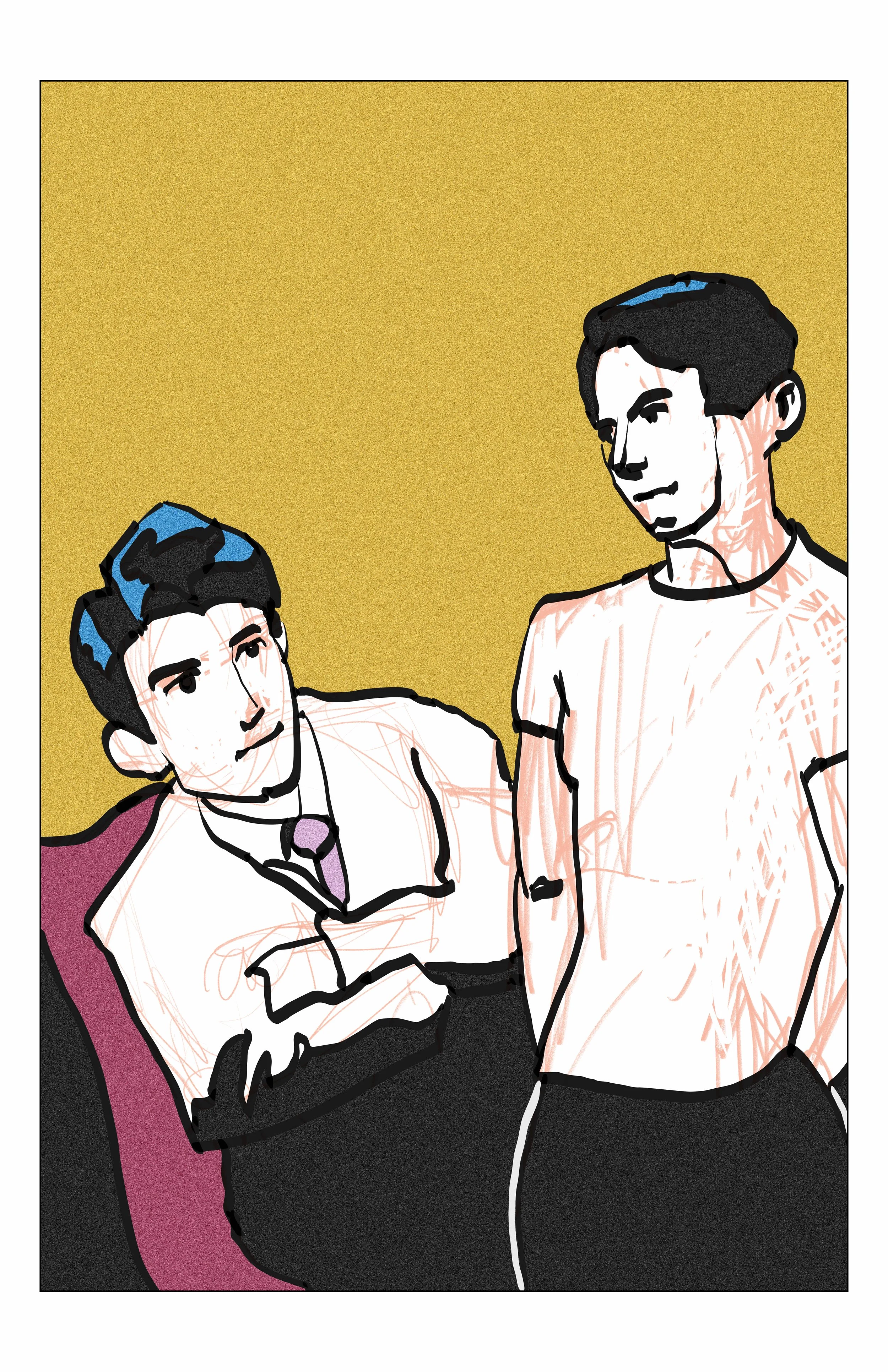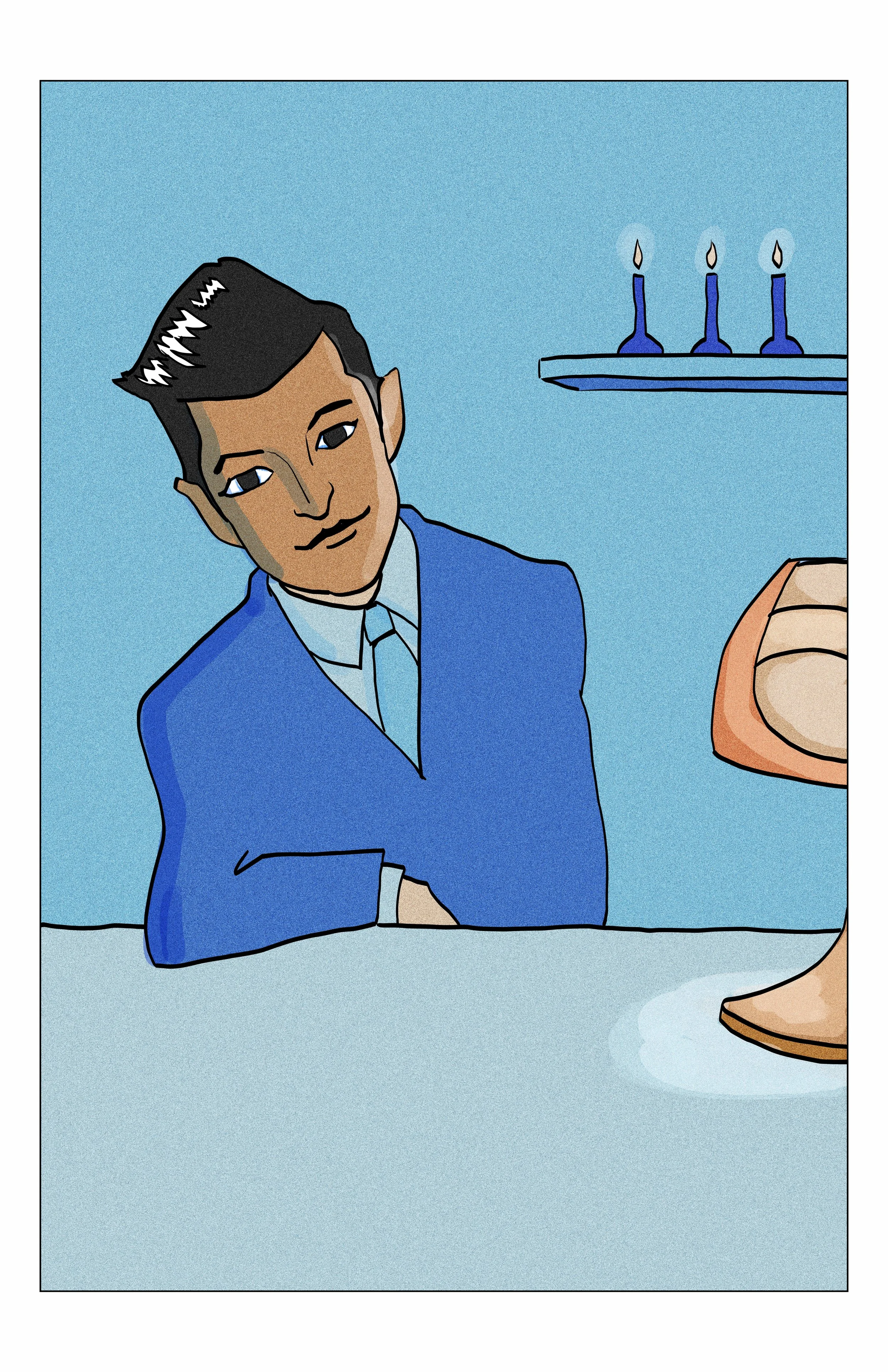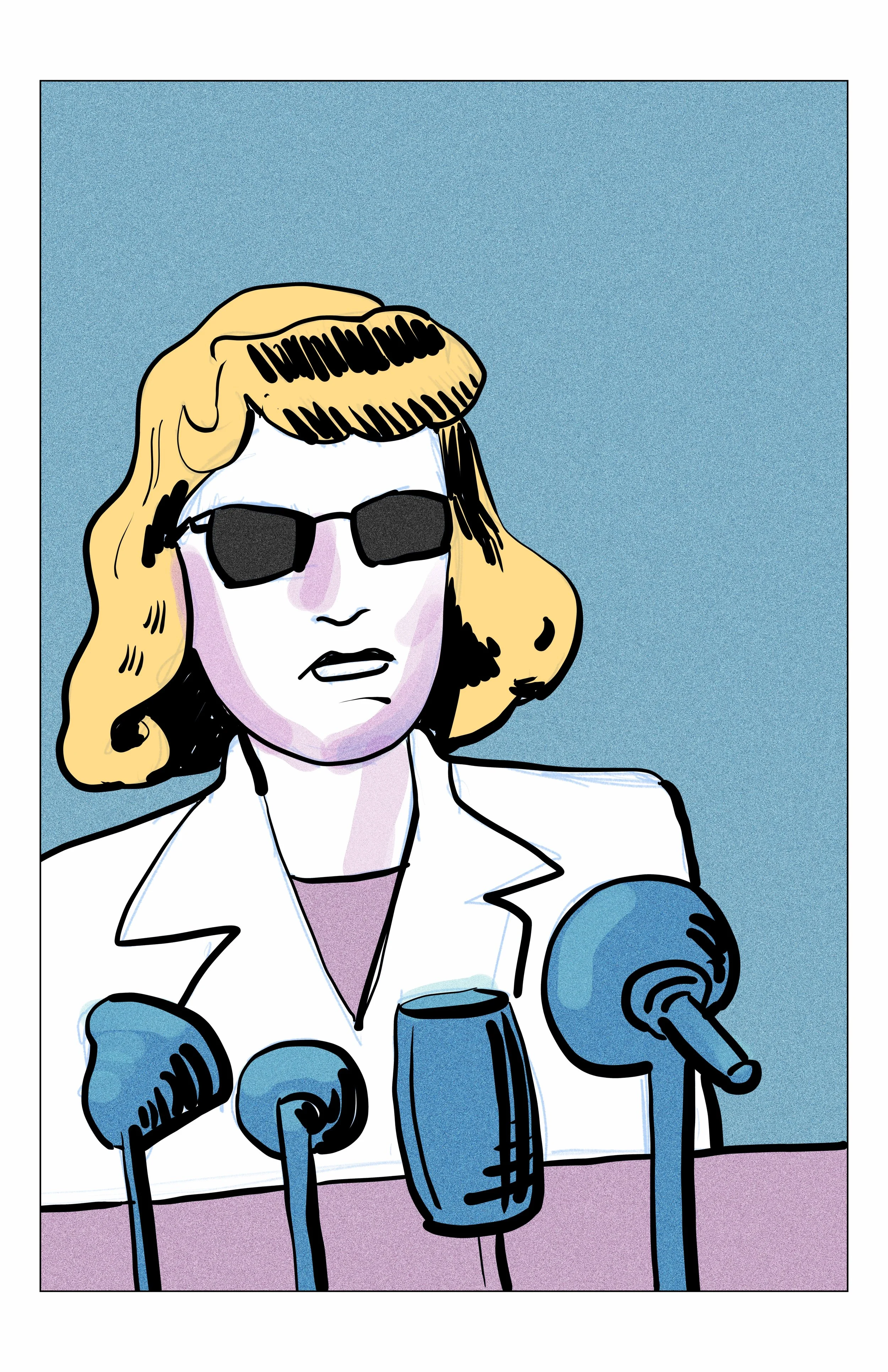Answer Key: Episode 12
“It was a major disaster. You can’t be there.”
“The research gas canisters were being replenished that morning and one of them exploded, causing a chain reaction that blew out all the offices. It was a major disaster. You can’t be there.”
Hal stood up in a panic. “I think my experiment will put me back to the minute I left, but I’m not sure.”
“Well, I’m still here…I think you’ll be alright. Good luck.” He stood and they shook hands, the strangest experience Hal had ever had.
He got back to the future office and returned to his own time without meeting anyone. As soon as he was back, he grabbed the external hard drive with his research, dropped out of his window onto the lawn and kept his head down as he walked away from the building. He was at the bus stop when he heard the explosion.
Answer Key: Episode 11
“So,” the future Hal said, returning from the kitchen with steaming mugs on a tray next to a plate of chocolate cookies, “what shall I call you?”
It was a beautiful spring morning. During the short walk to his studio apartment, he found himself looking for differences in the landscape and people but didn’t see any changes. The air was crisp, the sun shone on the daffodils, the commuter traffic was just beginning. There were a few changes in the apartment—a new couch, a painting of mountains on the wall.
“So,” the future Hal said, returning from the kitchen with steaming mugs on a tray next to a plate of chocolate cookies, “what shall I call you?”
Hal took a mug with a grateful nod. “Well, in short, time travel’s possible. I’m … well, I’m you, from your past.”
Future Hal looked down at him in an appraising way. “It’s like looking in a mirror.”
Hal sighed inwardly. Of course it was—they were the same person. Was he going to have to explain that? Surely he wouldn’t—
Future Hal laughed at the expression on Hal’s face. “What I mean is, you don’t look significantly younger than I am now. When exactly are you from? And how did you get here?” He looked now at what Hal was wearing and nodded. “I see. You’ve been in my—well, our office. Is that where you came from in the past?”
Hal started at the beginning, relating the whole project that Amser had run (this Hal rolled his eyes at the mention of her name) and how he himself had made the connection between histone tails and quantum consciousness elements, and developed the ability to send himself forward.
Future Hal took another sip of coffee and leaned back on the couch. He seemed to be taking it all in stride. He looked Hal in the eye and smiled. “So, you—well, me, I suppose—solved time travel. And you’ve solved the age-old question of paradoxes. The same person can be together without the Universe collapsing.”
Hal felt a knot untie in his gut. He hadn’t realized it, but he had been nervous. Worried that his future self might reject him or be so freaked out that Hal wouldn’t even be able to communicate with him. Instead, he found that he was actually starting to warm to this guy. He was smart, quick on his feet. They might be able to work together, create something new, something that no human had ever considered before.
“But you didn’t tell me,” this Hal continued in the same bemused tone, “when exactly you come from.”
“Oh, right. April 5, 2187. First thing in the morning—I beat everyone in.”
“What? April 5? No, no, you must return immediately! Go back and get out of the office, get as far away from the building as you can.
Answer Key: Episode 10
There was a look of surprise and a faint smile playing on his lips—is that really what he looked like from the outside?
It was a beautiful spring morning. During the short walk to his studio apartment, he found himself looking for differences in the landscape and people but didn’t see any changes. The air was crisp, the sun shone on the daffodils, the commuter traffic was just beginning.
He was in the building and in front of his door before another obstacle presented itself. Exactly what was the protocol here? He jittered his legs, shifted his weight back and was about to knock when he heard the metal rattle of the chain, then the handle started to turn.
“Alright, then.” Future Hal took a step back. There was a look of surprise and a faint smile playing on his lips—is that really what he looked like from the outside? There was a sparkle in this Hal’s eyes. “Not sure what’s going on here, but come out of the hallway, it might be confusing for my neighbors.” He ushered Hal in. “Coffee?”
Answer Key: Episode 9
The monitor came on as he dressed: he was 5 years in the future.
It happened again, but faster. This time, a pen sailed from workbench to desk with the precision of a dart. This was followed by a book, another pen, then calipers, faster and faster, back-and-forth across the room until he could no longer identify the objects themselves, just the blur of them passing. The blur became a mist, a fog, a gloaming of indistinct shapes. He watched in fascination as though he were watching a movie. Then the fog lifted, the blur returned to distinct shapes, the shapes became objects, the objects slowed until they wafted to stillness.
Hal had arrived. He took a breath, uncertain if there would be more movement, but nothing changed. The light was the same. He jumped up, tapped his computer, and went to the closet for the gym clothes. The monitor came on as he dressed: he was 5 years in the future.
Answer Key: Episode 8
Then it started. A loose paperclip rose up and floated through the air….
That morning Hal beat Amser in—she was probably on another early morning talk show—beat Kairos, and Iffan, who always reported to work at precisely 9am. The only ones there were workers at the loading dock rolling in tanks of medical grade O2. He went to his office and locked the door. Everything was in place. Of course what he had on his person—ID, glasses, and clothes—wouldn’t make the journey, but unless Hal underwent a complete personality change, his set of gym clothes would still be in the closet and a pair of spare glasses in his desk.
Hal grimaced after downing the slurry and sat back. Early morning sun was filtering in through the blinds, casting soft light on his bookshelf, his workbench, the inactive computer monitor, the pens and paper clips and notebooks strewn about. He tapped his foot—nothing was happening, and the mixture should already have crossed the blood brain barrier. Another breath. He started going over the ratios of the chemicals in the slurry, wondering how he might recalculate.
Then it started. A loose paperclip rose up and floated through the air to set gently down on the pages of an open book. As if a ghost had entered the room.
Answer Key: Episode 7
What about the paradox of meeting oneself? He’d find out.
Hal smiled and nodded at Kairos, then went back to his office with its tiny workbench to gather materials. He created a private file off the lab’s server to copy over Amser’s data and add his own notes. When consciousness was accelerated like particles in the Hadron Collider, it sped out of the present to some point in the future. One’s quantum brain—and therefore, as Hal saw in the rat, one’s body—traveled to the future.
He spent the next six months trying to reverse the procedure to send the rats back in time. The file of failed experiments grew. The rats had only returned to the present by following the exact neural traces of quanta that had sent them to the future. Hal was not able to guess the random path of the past. As it stood, he didn’t even know with any kind of certainty where the rats landed in the future. Only a human would be able to say.
When he imagined all the safety commissions, endless rules and regulations required before a single-celled organism would be allowed into next week, he got angry. Hal didn’t want to spend his life in the back seat, cleaning up lab reports for Amser. He was just going to go. Would Aroa Research Labs still be around in the future? What about the paradox of meeting oneself? He’d find out.Hal smiled and nodded at Kairos, then went back to his office with its tiny workbench to gather materials. He created a private file off the lab’s server to copy over Amser’s data and add his own notes. When consciousness was accelerated like particles in the Hadron Collider, it sped out of the present to some point in the future. One’s quantum brain—and therefore, as Hal saw in the rat, one’s body—traveled to the future.
He spent the next six months trying to reverse the procedure to send the rats back in time. The file of failed experiments grew. The rats had only returned to the present by following the exact neural traces of quanta that had sent them to the future. Hal was not able to guess the random path of the past. As it stood, he didn’t even know with any kind of certainty where the rats landed in the future. Only a human would be able to say.
When he imagined all the safety commissions, endless rules and regulations required before a single-celled organism would be allowed into next week, he got angry. Hal didn’t want to spend his life in the back seat, cleaning up lab reports for Amser. He was just going to go. Would Aroa Research Labs still be around in the future? What about the paradox of meeting oneself? He’d find out.
Answer Key: Episode 6
“When the rat disappeared, it might have gone into the future for a moment.”
“Hmm, ok, go ahead.” Kairos leaned back in his chair in a studied manner, holding his face in a serious look of inquiry.
“Well, what I focused on,” Hal turned his laptop screen toward Kairos so he could see the charts, “were the signs of aging in Rat A as soon as it reappeared. Now, those numbers were not there at the time of the final readings, when the rat was dissected.”
“Hmm, well, if there were mistakes in copying numbers, let’s keep it quiet—we’ve just landed a grant from the CDC to fund future studies.”
“Oh, I’m not questioning the skill of the member of Amser’s team, but I do think that the rat had suddenly aged. When the rat disappeared, it might have gone into the future for a moment.” Hal sat back and watched Kairos’ face. It was a changing sky on a windy day—a cloud of doubt, condescension in the twist of his lip, a brief flash of fear.
“Umm, well, that’s interesting, Hal, very interesting, but we have some pressing needs to meet as a research center.” He unconsciously straightened his already straight tie. “I’m about to present before the Brain Science Foundation. All my researchers have to work together to document and catalog Amser’s experiment. This will continue to get us features in journal articles, government funding, and eventually private sector donations. There is enough work in those two dead rats to carry us all into retirement,” he chuckled at the thought.
“But I could take a team now and explore time travel—”
Kairos’ voice became stern. “I don’t want any hint of pseudo-science or quantum mysticism to taint Amser’s findings. Do not proceed. Focus your efforts on bolstering your colleague’s work. The sooner we establish ourselves, the sooner we can consider other ideas. Do I make myself clear?”
Answer Key: Episode 5
“Well, I was looking at Amser’s dissection numbers, and I’ve reached an interesting conclusion.”
Iffan’s shoulders relaxed. “Alright then, I guess it’s ok.”
After Hal confirmed his suspicions with two fresh rats, Iffan urged him to take the findings to Kairos Yilmaz, the director of Aroa Research. Iffan wanted the extra research approved so he wouldn’t get in trouble. Hal wanted Kairos to finally put him in charge of a team that would lead the way to the future—or the past, he really wasn’t picky.
“Kairos, do you have a moment?” The director was seated at a lab bench that had been converted into a desk. He had several faux candles on the shelves behind him, twinkling a steady pulse to mimic the flickering of natural candles. An elaborate, faceted Tiffany lamp perched at the edge of his desk, casting a multicolored glow over his spray-on tan.
“Halit, of course, come in. I was just watching the Today Show—Amser did a great job, giving Aroa Research a plug in the middle of answering Jody Decoe’s animal rights’ question.”
“Oh, she’s a natural.” Hal smiled with his mouth.
Kairos nodded. “What brings you into my office today?”
“Well, I was looking at Amser’s dissection numbers, and I’ve reached an interesting conclusion.”
Answer Key: Episode 4
“Iffan, help me run a recreation of Amber’s experiment?”
Halit pulled Iffan Roberts, a fellow researcher, aside.
“Iffan, help me run a recreation of Amber’s experiment?”
Iffan was very tall but hunched himself over to try to appear smaller. His pencil thin arms hung from his T-shirt; his knobby elbows protruded from his sides. He jabbed his hands in his pockets and looked nervously over his shoulder. “Ah, I’m not sure, Hal—is it ok to use lab resources for this? I mean, the experiment’s already been conducted….” Iffan was a rule follower, not so hot with innovation, but the ideal man to be in charge of equipment.
Hal, on the other hand, had a swirling black pit of ambition at his core. In other scientists, this type of drive would force them to lunge at opportunity, backstab when necessary, push to the front. In Hal, the desire could only be filled with a type of glory that came to mankind once or twice in a millennium. Hal was going to be that man in his time, no matter what. “No big deal, Iff, I’m onto something here that could be another huge breakthrough. I’ll take the fall if anyone gives us trouble.”
Answer Key: Episode 3
Rat A had suddenly doubled in age.
The second discovery involved no new experiments, just a close analysis of the data from the original. Halit Adem knew he was the better scientist, always being sidelined while Amser sloppily did whatever she wanted. And he was sure this time was no different. Three readings had been taken of Rat A: brain chemistry before the administration of quantum slurry, the unscheduled one immediately after it reappeared, and a final post-mortem analysis. It was the second reading that caught Hal’s attention: Rat A suddenly had doubled in age. Postmortem analysis put Rat A and Rat B back to the same age. Hal realized that the interviewers had asked the wrong question: not where did Rat A go, but rather when.
Answer Key: Episode 2
Halit Adem made the second discovery.
After a moment, Rat A popped back in the exact same spot. Even with the disruption, it still got the best time ever. The team then used brain imaging equipment, and—most unfortunately for the rats—dissection equipment to map both brains. The conclusion: the way to amplify the quantum component in rat consciousness had been discovered. Amser Hughes and her team were showered in accolades, awards, and funding.
Talk show hosts and even fellow scientists quickly turned the conversations to where Rat A went when it disappeared. Was it the same rat who returned? A parallel Universe rat? Amser was a natural at appeasing interviewers with technical jargon nonsense while turning the attention back to funding. She basked in the spotlight of attention.
This same spotlight created a shadow, a backstage area, where Halit Adem made the second discovery.
Answer Key: Episode 1
The process involved two lab rats….
The first discovery was made at Aroa Research Center in the late 22nd Century. Amser Hughes led the experiment. The process involved two lab rats, an A and a B, a maze, and a timer. Rat B was the control. Amser’s team nicknamed the psychotropic drug cocktail injected into Rat A “quantum slurry”. They expected the cocktail to boost the rat’s ability to process information, resulting in a faster time in completing the maze, showing that some pieces of neural cognition happened at the quantum level. The difference was discernible immediately: Rat A barely paused at the turns, charging toward the finish, while Rat B plodded along, awkwardly backing out of every dead end. Amser beamed in triumph, her finger hovering over the stopwatch, ready to hit the button as Rat A reached the exit.
But then it disappeared.














